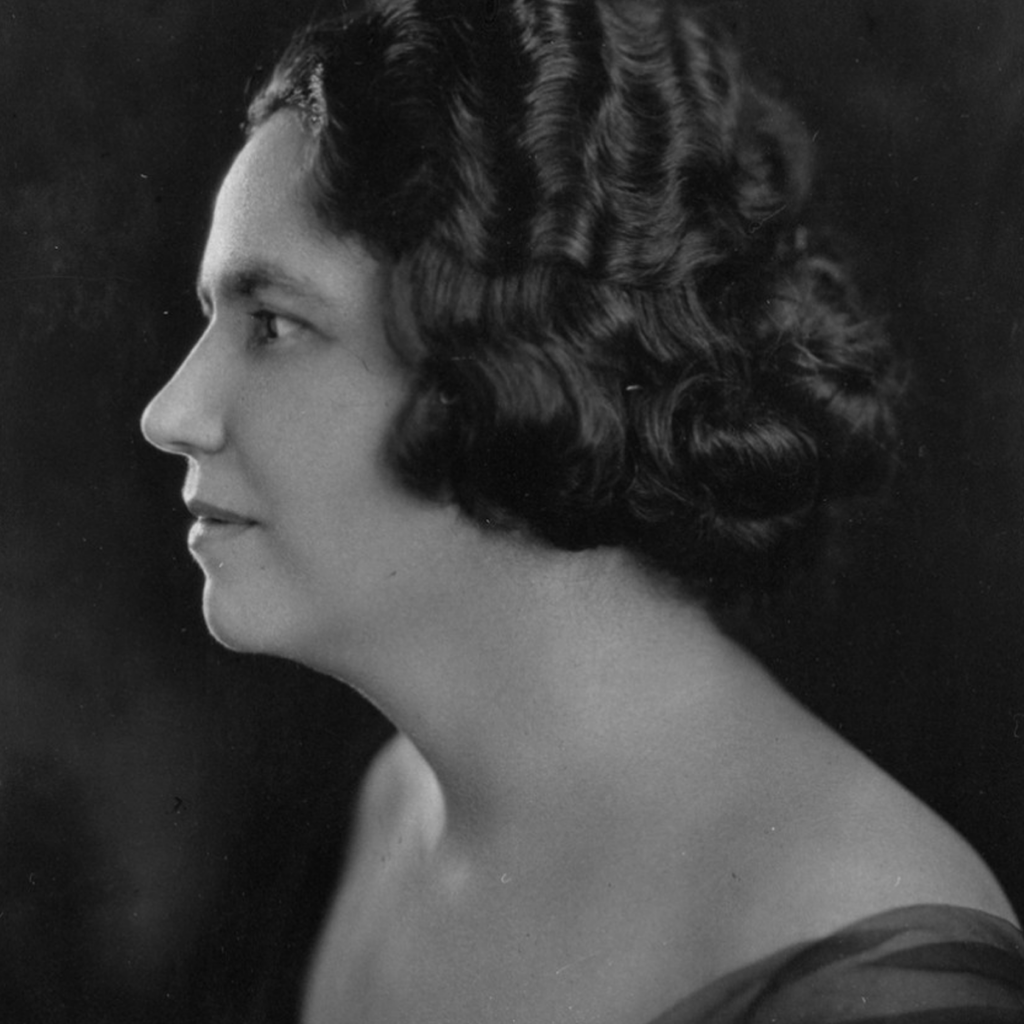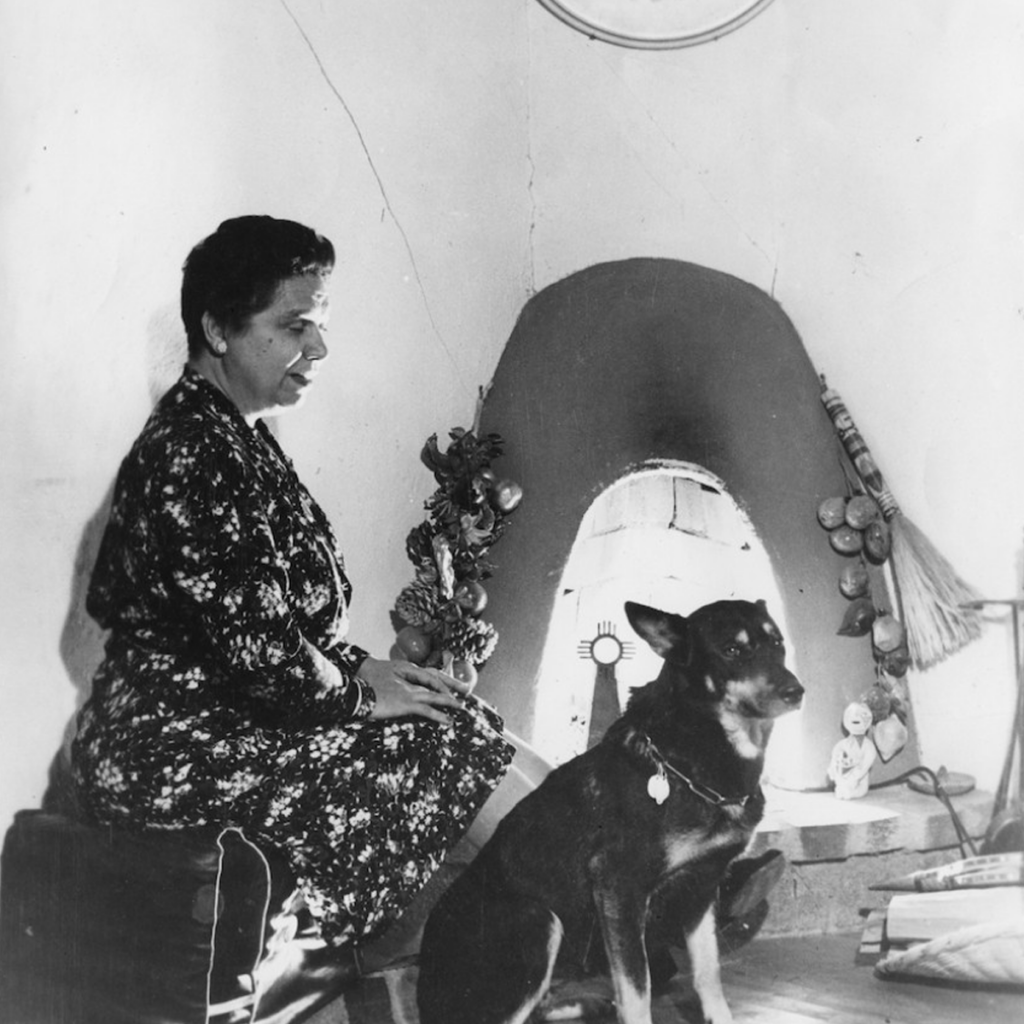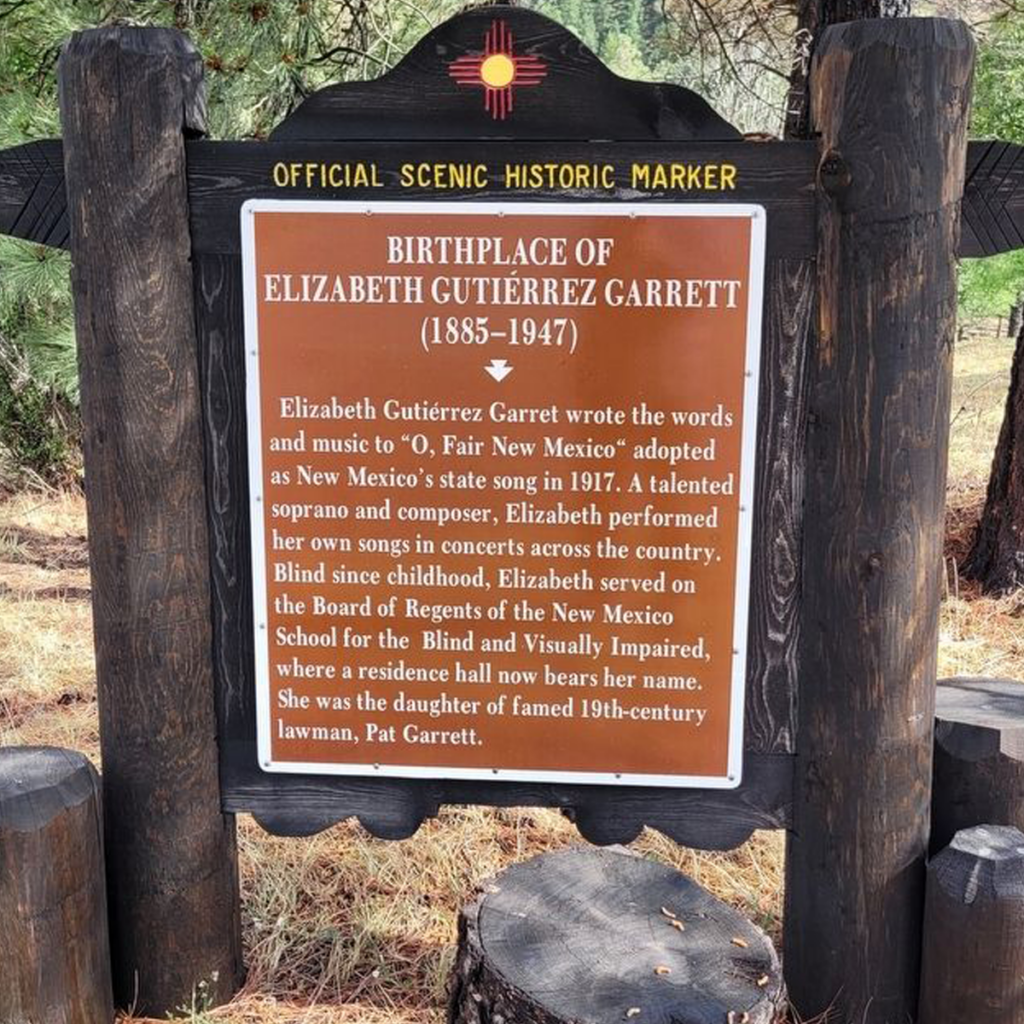Elizabeth Garrett
Photo Credit: Dana E. Johnson. Courtesy of the Palace of the Governors Photo Archives (NMHM/DCA)
Elizabeth Gutierrez Garrett
1885 - 1947
Lincoln County
Artist
|
Blind from a very early age, she lived an active outdoor life as a child, composing one of her first songs “swinging from an old apple tree.” She performed her original compositions in places as extraordinary as Sing Sing prison, and her composition “O, Fair New Mexico” became the Official State Song in 1917.
Elizabeth Garrett was the third of eight children born to Pat Garret, well known as the sheriff who brought outlaw Billy the Kid to justice, and Apolinaria Gutierrez Garrett. Born October 9, 1885, in the Garrett home in Eagle Creek outside Alto (near Ruidoso), she lost her sight either at, or shortly after, her birth. Elizabeth moved with her family to Roswell when she was still young. In an interview given to Works Progress Administration writer Georgia Redfield in February 1937, she recalled her childhood on the Roswell farm and one of her first musical compositions, showing an early talent for music:
“My childhood days on the farm near Roswell were happy—neither constricted nor restricted. I led an active outdoor life, rode horseback and did all things any child loves to do. . . . One of my earliest recollections of composing was when swinging on a limb of an old apple tree. I made up a song about the apple blossoms and the bees that were buzzing around the trees. I never catch the odor of apple blossoms that I don’t feel again the leafy shadows under the trees and the bright sun, and hear the songs of the birds as they called to each other from tree to tree in the orchard.”
At the age of six, Elizabeth began school at the Texas School for the Blind in Austin. After graduation, she moved to El Paso, where her father had accepted a position as a Customs Officer, and taught music. Her family moved to Las Cruces in 1905 at the end of her father’s commission; she joined them three years later.
Garrett’s talent for music, developed further while she was in school, would sustain her throughout her life. She composed and sang her own songs at performances around the state and the country—once even performing for prisoners at Sing Sing.
Garrett moved to Roswell and lived in a five-room adobe she called “La Casa,” described in Redfield’s WPA interview: “[The house] has all the color and atmosphere of the early-day Spanish architecture, interior decorating and furnishing. The living room is bright and cheering (no shades are ever drawn to exclude the sunlight here) and there are flowers everywhere, with a soft blending of bright colors—gold predominating—in draperies, rugs and pictures.”
Garrett’s most famous and lasting contribution to New Mexico was the words and music for what later became the State’s first official song, “O, Fair New Mexico,” which she composed in 1915. Upon request by New Mexico Governor Washington E. Lindsey, Garrett performed the song personally before the state legislature in Santa Fe in 1917; the following day, legislators voted unanimously to make it the Official State Song of New Mexico. While “O, Fair New Mexico” remains known today as the Official State Song, the State has since adopted a Spanish-language State song, a State ballad, a State bilingual song, and an official cowboy song.
“O, Fair New Mexico” is written in 2/4 time in the key of A flat major. Its three stanzas, with refrain, describe the climate, geography, agriculture, and overall beauty of New Mexico. Each stanza uses the lyric “Nuevo México,” while the refrain uses “New Mexico.” The lyrics of the refrain are:
“O, fair New Mexico,
We love, we love you so,
Our hearts with pride o’erflow
No matter where we go,
O, fair New Mexico,
We love, we love you so,
The grandest state to know, New Mexico.”
The New Mexico Legislature awarded Garrett a monthly stipend for life for use of the song.
Garrett was on the Board of Regents for the New Mexico School for the Blind and Visually Impaired in Alamogordo. A residence hall there now bears her name. Garrett also wrote the school song.
In Redfield’s 1937 WPA interview, Garrett summarizes her view of her role in life and her position as the daughter of one of the West’s most famous lawmen: “Quite frequently, my father had to bring harmony with a gun. I try to do so by carrying a tune.”
Garrett died after suffering a fall while out on a walk with her guide dog Tinka in Roswell on October 16, 1947.
Sources:
Garrett, Elizabeth. O, Fair New Mexico. Gamble Hinged Music Co, Chicago, IL.
Hall, Ruth. A Place of Her Own: The Story of Elizabeth Garrett. Santa Fe: Sunstone Press, 1983.
Melzer, Richard, Ph.D. Buried Treasures. Santa Fe: Sunstone Press, 2007.
Metz, Leon Claire. Pat Garrett: The Story of a Western Lawman. Norman, OK: University of Oklahoma Press, 1972.
Redfield, Georgia B. “Early Life of Elizabeth Garrett.” Works Progress Administration Interview, February 9, 1937.
Redfield, Georgia B. “Elizabeth Garrett." Works Progress Administration Interview January 13, 1939.
Weigle, Marta and Peter White. The Lore of New Mexico. Albuquerque: University of New Mexico Press, 2005.









